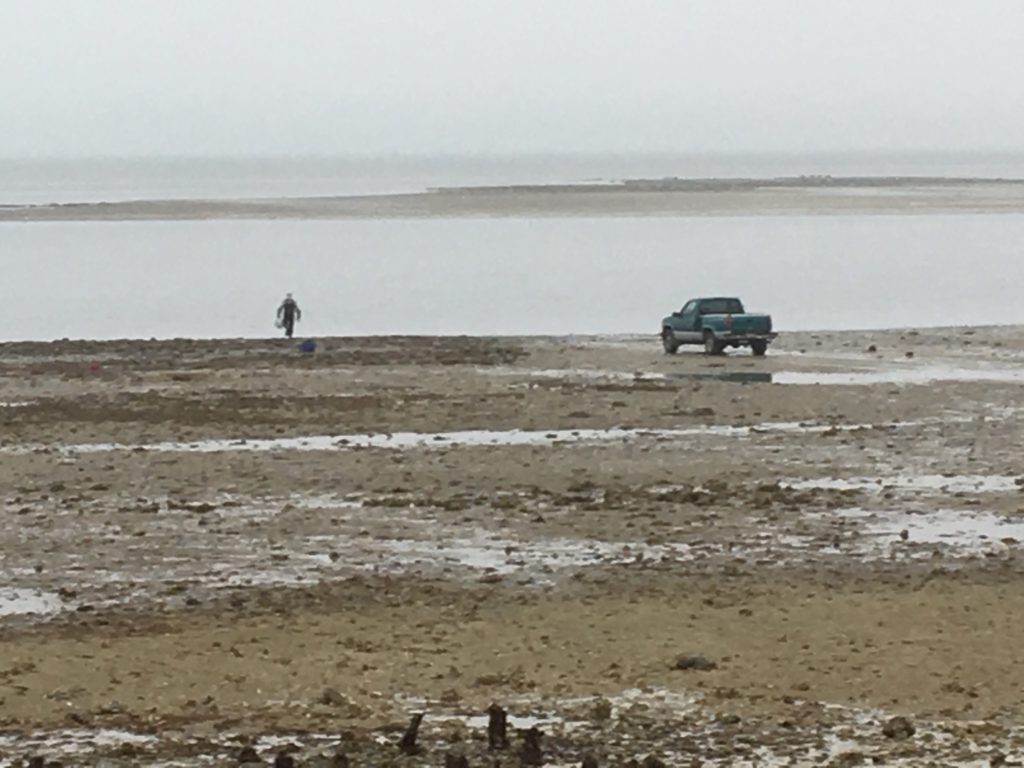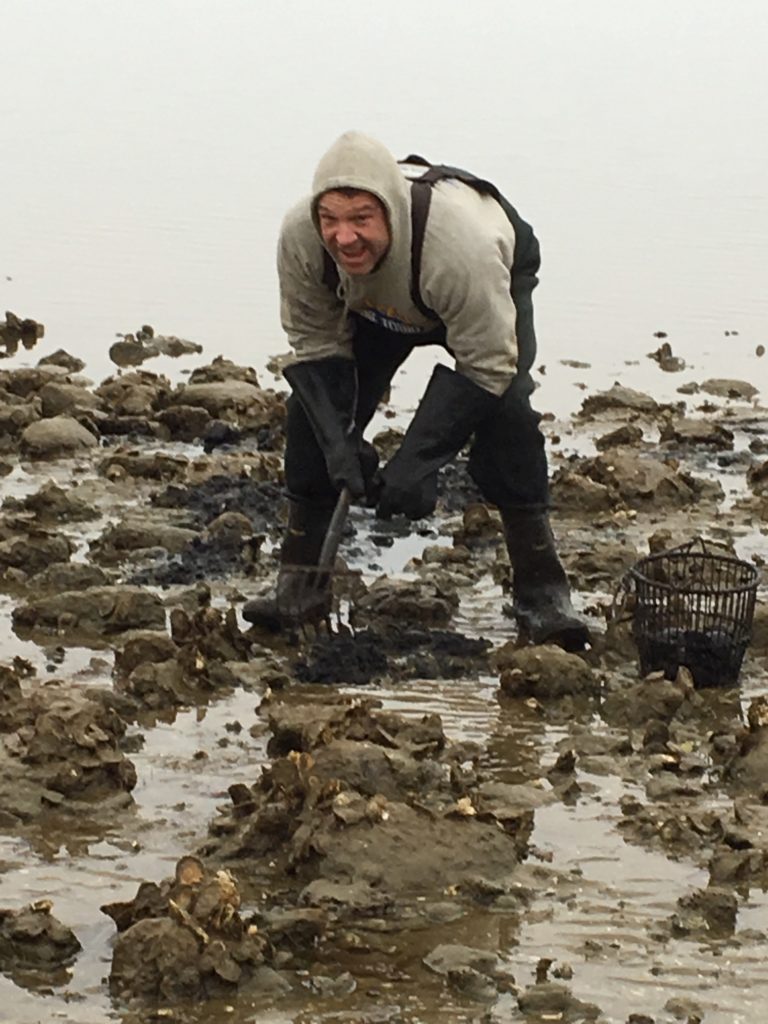
WELLFLEET — For local shellfishermen, good news this fall was in short supply. Covid’s shuttering of restaurants across the country had wreaked havoc on the wholesale distribution chain, usually a reliable summer boon. Winter — a tight season, even in the Before Times — loomed with no chance of a national reopening by Christmas.
The market, said Wellfleet Shellfish Constable Nancy Civetta, “had just crashed.” That left farmers, draggers, and foragers strapped for cash and short on hope. And efforts to regain their footing proved limited by, of all things, their home state.
Other New England states allow commercial shellfishermen to sell directly to consumers. Even if restaurant sales dry up, fishermen can offer their product to friends, family, and neighbors. Massachusetts takes a different approach. It restricts the sale of shellfish to licensed wholesale dealers, whose distribution patterns Covid-19 left in tatters. This fall, Wellfleet’s shellfishermen found themselves faced with a pileup of legal, viable, delicious product — and no way to sell it.

“There’s a lack of parity with the other states, which is a real problem,” said Ginny Parker, president of the Wellfleet Shellfishermen’s Association (WSA). In November, Parker said, she petitioned the state Div. of Marine Fisheries (DMF) to temporarily allow direct grower sales. The division denied her request.
That led to a brainstorming session with Civetta, Selectman Ryan Curley, Assistant Harbormaster Will Sullivan of the Wellfleet Shellfish Advisory Board, and Joshua Reitsma, a fisheries and aquaculture specialist with the Cape Cod Cooperative Extension.
From that meeting emerged the Wellfleet Shellfishermen’s Farmers Market, a collaborative effort in which the town handled negotiations with DMF and the state’s Dept. of Public Health along with inspections, WSA serves as the promoter, and Wellfleet’s Holbrook Oyster Company, a licensed distributor, is acting as the dealer of record.
The first shellfish market was held on the Wellfleet pier on Dec. 12, the second a week later.
“We know what it’s like to not have a market,” said Zack Dixon, a co-owner, with Jacob and Justin Dalby, of Holbrook Oyster. “So, if there’s anything we can do to help create a market, of course we’re going to do it.”
The market is open to all Wellfleet commercial shellfishermen, who can opt in on a week-by-week basis. Their names, products, and prices are posted on WellfleetShellfishermen.org, where customers can order oysters and clams until 10 a.m. on market days (upcoming dates are Dec. 30, then every Saturday starting again Jan. 9).
Three vendors participated in the market’s first go-around on Dec. 12. Holbrook Oyster sold its own product, as well as distributing other shellfishermen’s. Evan Bruinooge of Outta Bed Oyster Company offered farmed oysters and will have cherrystone and topneck clams, too. Austin and Jared Ziemba sold wild Wellfleet oysters. Three additional shellfishermen joined for the operation’s second week, on Dec. 19: Sonya Woodman, a wild picker, and farmers Jeremy Storer and Pete Brundage.
The variety of vendors and the chance to learn about them is a good thing, said Civetta. She also made the point that oysters from different locations can taste different, even though they are all grown in Wellfleet. The market, she said, “offers a taste of all the different nuances and flavors and nooks and crannies of Wellfleet Harbor.”
“Each oysterman and woman is kind of developing his own following,” said Parker. And just two weeks in, business is strong. Civetta said Dec. 12 saw about 65 preorders and a few dozen walk-up customers. On Dec. 19, over a hundred preorders and a fresh slew of walk-in customers generated so much traffic that a line of cars stretched all the way from the pier to Mayo Beach; the next market will take place at the bandstand to avoid a pileup.
The organizers would not provide exact numbers on how many customers came or how much shellfish was sold. But Civetta did say that the first market sold more than 2,000 oysters and clams and that number jumped to more than 5,000 on Dec. 19. Parker said that, both weeks, every vendor completely sold out of his or her product.
Each shellfisherman sells any preordered product to Holbrook Oyster before it gets distributed to customers. Oysters go to consumers for a dollar a piece; Holbrook collects a nickel per oyster, and credit card processing fees shave off a few more cents. So, although their market reach is reduced, the shellfishermen’s per-oyster profits are high.
For all its success — Civetta called the market “extremely well-supported” by the community, and Parker called it “pure good news” — worry is still a constant.
That’s because the market doesn’t come close as a replacement for the kind of business shellfishermen are missing right now. “I don’t ever see this taking the place of the normal commerce that happens,” Civetta said.


